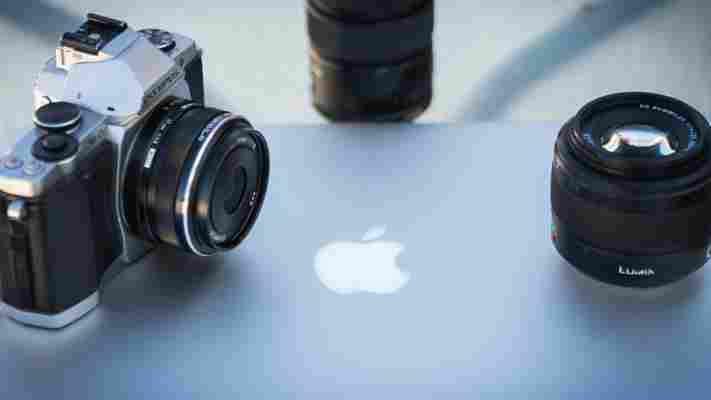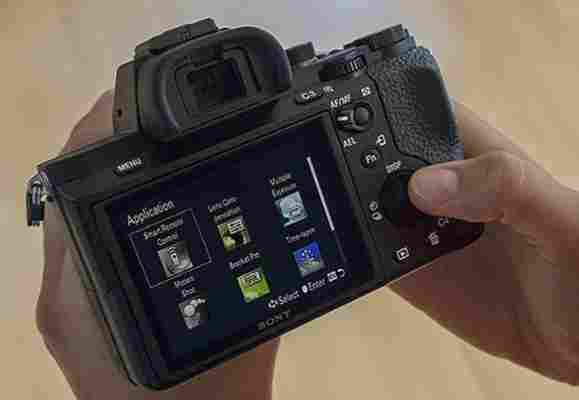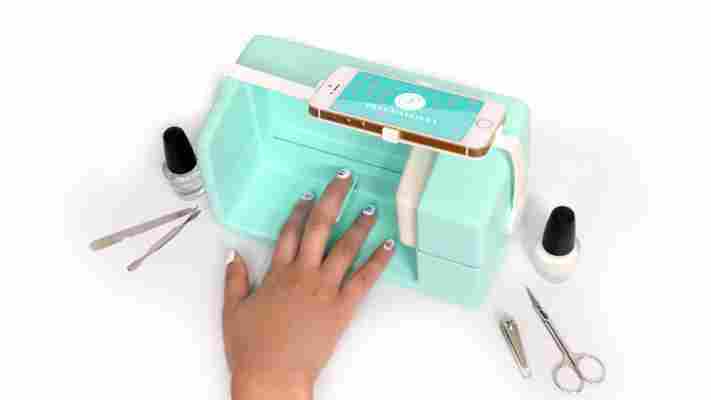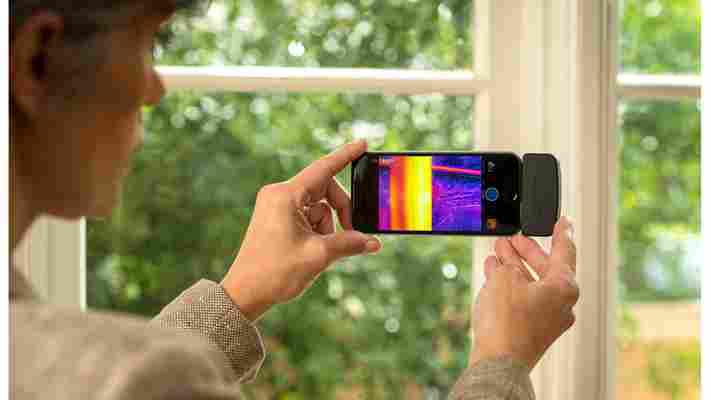Say what you want about Apple, but the company has a way of revolutionizing or revitalizing most hardware markets it enters; MP3 players, smartphones, tablets and smartwatches are just a few off the top of my head.

While I can’t tell you what Apple’s next endeavor will be ( probably cars ), I can tell you what I wish it would be: interchangeable lens cameras. Here are five reasons why:
Disclaimer: Before the ‘Apple fanboy’ chants begin, my main computer is Surface Pro 3 and my phone is an LG G4. I was also a happy Zune owner. That is all.
Imaging technology has made astounding progress, but professional and enthusiast cameras are still dumb.
The way photographers interact with their photos has hardly changed since the advent of the digital camera. You shoot photos on your camera, but action still happens somewhere else. Sure, some cameras have very recently added Wi-Fi connectivity, but even then it’s much more cumbersome than the instant sharing we expect from smartphones.


That needs to change; enthusiast camera sales have been lagging for years, and as more people prefer to take photos with their smartphones, dedicated photography brands seem to always be lagging behind. At the very least, cameras need downloadable apps so you’re not always limited to you whatever technology comes pre-installed.
(And yes I know Sony has some apps for its Alpha series cameras, and Samsung has a couple of Android models, but that’s like saying the T-Mobile Sidekick had an app store before the iPhone.)
Granted, it doesn’t have to be Apple that make cameras smarter, but no company can match its developer clout.
No, I’m not talking about the one in your iPhone. Back in 2013 Jony Ive and Marc Newson teamed up to design a special edition Leica camera for charity, so Apple’s design honcho clearly already has an interest in photography and some design experience to back it up.
That camera sold for $1.8 million , by the way.
Apple has a pretty tight product portfolio. But who’s to say it can’t branch out a bit?
It seems pretty likely the company is working on a car, after all. Apple generally sticks to devices the average person will make use of everyday, and if the company were to create something radically different from what came before, there’s no reason to see why a camera wouldn’t fit that criteria.
Though specs like megapixels, aperture and sensor size help sell cameras, the image processing behind the photos often goes unrecognized. Apple is always near the top of the smartphone camera heap because of its excellent image processing and smooth software, not because it has the best technology. Take this 4K video shot entirely on an iPhone 6s, for example:
Since at least the iPhone 4, Apple’s cameras have consistently had some of the best color reproduction in the industry, and the company has pioneered easy to use features like auto-HDR, which help negate some of its sensor’s technical deficiency and a user’s lack of expertise.
According to Flickr, at least. A quick look through the photo-sharing site’s camera-finder shows that over the past year, the iPhone 6, iPhone 5s, and iPhone 5 an iPhone 6 Plus were four of the five most popular cameras (the other was a Samsung Galaxy S5, at fourth place). Among brands rather than camera models, it’s still Apple in the lead, followed Samsung, and then Canon and Nikon.
Those numbers likely skew even more more strongly towards smartphones on social media platforms intended for documenting memories like Facebook and Instagram.
Apple clearly already has the attention of serious photographers outside of mobile too. On the desktop front, Aperture was one of the most powerful editing apps among professional photographers, and even the new Photos apps provides far more editing power than your average image management software.
Among Lightroom users, anecdotal evidence from my experience as a professional photographers shows the market heavily skews towards Apple. I use Windows, but I’d consider an Apple camera without hesitation.
Apple has a huge potential market it can break into, and if can bring the same hardware and software integration it has to its other products, it could change help revitalize professional photography. For a company already defined by having the strongest visual identity in tech, professional photography would fit right in.
By women, for girls: Preemadonna challenges Silicon Valley’s boys club
After ordering her salad, Pree Walia reaches into her wallet to pull out a credit card. She hands it over to the cashier, who grabs the card and stops.

“I love your nails!” the cashier says, excitedly. She grabs Walia’s hand and looks at her fingernails, with a different emoji on each one.
“Thank you,” Walia responds. “Actually, they’re for my startup.”
It’s a charming and effective opener. After all, nails, to some extent, are Walia’s business. After a career working on political campaigns, Walia jumped headlong into the startup world, working at an LED lighting company, where she finally had her own lightbulb moment about body-safe ink.
The result is Preemadonna, a beauty tech hardware startup currently crowd-funding the Nailbot : a piece of hardware designed to safely print nail art designs with real ink and a smartphone. On its face, the Nailbot looks like an unlikely candidate for Silicon Valley success, as its directed towards a generally underserved market — tween and teen girls.
But that assumption belies Walia’s own relentless pursuit of visibility in an ecosystem flooded by products generally made by and at least predominately made for men. It also doesn’t speak to the startup’s current success: in addition to developing a working and focus-tested hardware product, the company wowed enough judges to make the finals at this year’s TechCrunch Disrupt.
“I never thought that I would want to go build something of my own, but I did,” she said. “All of that was training for that magic moment on stage.”
The iteration of the Nailbot that Walia and her co-founder — robotics engineer Casey Kute Schulz — brought to Kickstarter is their motorized version, which retails for $199. Girls (and women) affix a smartphone running the Nailbot app and connect to the printer via Bluetooth. After painting a (preferably white) coat of polish on the nails, the Nailbot app takes a picture of the nail in order to size the selected art correctly and then prints the icon directly onto the nail.
Developed after continuous testing in both mechanical and non-mechanical prototypes, Walia is excited about how far the hardware startup has come in creating proprietary technology that makes this difficult task look effortless. Namely, since spending four months in Shenzhen, China, where she and Schulz worked on the device as part of the Hax accelerator program .
“We had short-listed our contract manufacturers, gotten our prototypes in a better state for manufacturing, and developed the technology to ship on time at a price point we could stand by,” she said.
For all their work, the Nailbot sounds cute. But cute is a hard sell in Silicon Valley: in 2015, less than one third of American venture capital firms have at least one female partner, and of the 100 largest VC firms in the country, 40 of them are male-only shops. Walia said that she’s had a hard time convincing male venture capitalists that nail art hardware is worthwhile, with many probing her with questions regarding the demand for nail care among girls and women. For a common question — “How much of an issue is painting a nail with a non-dominant hand?” — Walia came up with a creative solution.
“If you’ve never painted your nails, how do you know that’s a problem?” Walia explained. “The only way to disprove someone or show someone is to get them to try to paint nails with their non-dominant hand. So, I would bring a fake hand for them to paint nails.”
The knowledge gap surrounding beauty, and the ways that the tech startup industry can solve them beyond monthly subscription ecommerce services, often means that endeavors like Walia’s look faddish. But colloquially, Preemadonna is targeting one of the most powerful, unseen influencers on the Internet: teen girls. While they are purposefully kept out of user demographics due to their age, there is plenty of evidence that teen girls have a particularly effective sway in not only the sustained popularity of a platform (see: Twitter, Instagram, Snapchat, YouTube) but also the elevation of hardware to a prestige device (see: the iPhone).
Walia is just as passionate about that demographic.
“I think people are going to pay attention to Generation Z,” Walia says, “Some investors look at me funny when I say, ‘We gotta get with the program, they’re going to college soon!’ But I like to be ahead of trends, and that’s what we are.”
And those involved in backing Preemadonna have embraced Walia’s vision. In perhaps no surprise, Walia confirms that she has a very healthy base of female investors — mostly small donors who really care about what Walia wants to achieve with Preemadonna.
“Fundamentally, the women in my life have helped me build this.” Walia explained. “This is a company built buy women, for women. Women have held me up. They gave me my first checks for this company.”
And despite having a beauty-focused approach, Walia sees the Nailbot as more than just a product, and Preemadonna as more than just a beauty company. She has developed partnerships with organizations like Girl Scouts of New Mexico Trails and Maker Girl to help introduce coding concepts to girls at an early age. In one particular perk in the campaign, the company is offering a full program to help girls create their own touchscreen printer. Developed with curricula by Schulz, Walia says the company is keen on creating products that inspire girls to understand their own capabilities.
“For me, along this journey, this is not just a nail-painting robot,”she says. ” We’re showing girls how we went from an idea, to a working prototype, to a functional device. This very clever bot that every girl wants is going to be the mini-computer in their house that they can use to explore technology.”
So yes, Walia, Schulz and Preemadonna are in the business of nails. But they’re also in the business of empowerment for young women, and that is not a novelty.
➤ Nailbot: A Nail Art Robot that Inspires Creativity [Indiegogo]
Flir releases updated thermal imaging camera for iOS; Android on the way
Flir , which started life as an industrial thermal imaging device for contractors and sports enthusiasts, has evolved into a full-fledged consumer gadget with a variety of uses.

The company is releasing a new, smaller, higher resolution version of its Flir One plug-in camera accessory for iOS. An Android device is imminent. The device shows you thermal images that let you see in the dark, view invisible heat sources, compare relative temperatures and see through light, fog and smoke.
Flir says its device can detect temperature variations smaller than a tenth of a degree, so you can identify energy inefficiencies and water leaks at home and explore the great outdoors, even in total darkness.
The 2.75-ounce device is connected by either micro-USB for Android devices or Lightening connector for iOS devices and is powered by an internal battery so as not to drain your handset. Updated technology gives this new model four times the resolution of the previous version.
Flir One uses both a standard camera and a thermal camera. Images are enhanced by the device’s imaging technology, which embosses edge details from the visible camera onto the thermal image at a resolution of 640 x 480 pixels.
The Flir One free companion iOS app, features nine color palettes, time lapse and close up functions, still and video capture, a temperature spot reader and an automatic thermal shutter. You can save images to the Camera Roll or share them over social networks.
A host of other apps are also available or on the way, including a Comfort Tracker for your home, a resource for finding contractors, remote video monitoring from a second phone, and even an app that monitors the health of your horse (if you are lucky enough to have one).
Flir is also releasing an updated iOS software development kit (SDK) and a new Android SDK so developers can build a variety of utilities and creative apps on both platforms.
A Flir certified developer program offers training in thermal imaging technology and the use of the specific developer tools, while the Flir Approved Application program offers developers publicity through Flir marketing programs.
Flir One for iPhone is available for purchase today on the Flir website for $249.99. The Android version, as well as worldwide rollout to e-tailers and retailers, is coming in July.
The first generation Flir One for Apple’s iPhone 5 and 5s is now available for $149.99.
➤ Flir One
Read next: The US Army is building hoverbikes based on technology from a Kickstarter campaign
